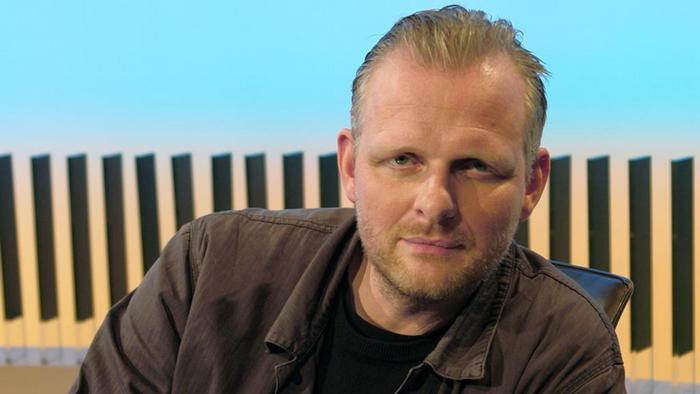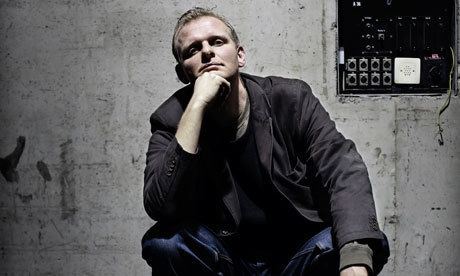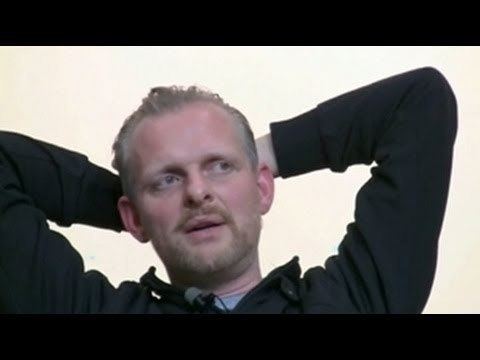Name Thomas Ostermeier | Role Theatre Director | |
 | ||
Talk with theatre director thomas ostermeier talking germany
Thomas Ostermeier (born 3 September 1968, Soltau, West Germany) is a German theatre director. He currently mainly works for the Schaubühne.
Contents
- Talk with theatre director thomas ostermeier talking germany
- Thomas ostermeier hamlet
- Biography
- References

Thomas ostermeier hamlet
Biography

Ostermeier began his theatrical career in 1990 acting under director Einar Schleef, one of his major inspirations, in his Faust project at Berlin’s Hochschule für Künste. After the Faust project concluded in 1991, Ostermeier began studying directing at the Ernst Busch Academy of Dramatic Arts in Berlin where in 1992 he met his mentor Manfred Karge. From 1993 to 1994 Ostermeier acted as Karge’s assistant director and also acted in Weimar and at the Berliner Ensemble. In 1996 Ostermier was asked to take over as artistic director for the Barracke at the Deutsches Theater, an offer he attributes to his production of a play by the Russian symbolist Alexander Blok at Ernst Busch, which was seen by the Barracke’s then chief dramaturg.

Ostermeier brought dramaturg Jens Hillje and designer Stefan Schmidke, both of whom he continues to work with, to the Barracke. The three created a five-year programme aiming to mirror reality and dealing with the themes of sex, drugs, and criminality. During his time at the Barracke from 1996 to 1999, Ostermeier began developing the aesthetic he is known for today. Early in his career Ostermeier identified the major problem of German theatre as too much decoration and celebration of celebrity. He rebelled against this aesthetic, embracing the “intimate and violent” psychological realism emerging among young British playwrights like Sarah Kane and Mark Ravenhill. These British playwrights where inspired by their difficult social situations, making their plays more interesting and inspiring for Ostermeier than the work of their German counterparts. Ostermeier was responsible for bringing these new in-yer-face dramas to Germany, thus giving the playwrights international attention, and inspiring young German dramatists, such as Marius von Mayenburg, to create similar dramas. The 1998 production of Ravenhill’s Shopping and Fucking won Ostermeier international attention and an invitation to the Berliner Theatertreffen as well as recognition as the enfant terrible of German theatre.

Ostermeier became known for his genre of Capitalist realism, which he is still known for today. This aesthetic forces his audience to watch the gritty violence of reality caused by a ruthless capitalist system. This form of realism “seeks revenge on the blindness, and stupidity of the world.” Ostermeier seeks to challenge his audience by problematizing the modern societal values of Germany and Europe. His realist aesthetic is indicative of his own left wing political beliefs, which starkly criticize Western capitalism and the values of modern European society.

In 1997 Ostermeier began applying his realist aesthetic onto classic plays, the most notable being Henrik Ibsen's A Doll's House. The production marked the beginning of a longstanding collaboration between Ostermeier and designer Jan Pappelbaum. As well as marking the start of Ostermeier’s revivals of pieces of classic theatre with reimagined endings, Nora met with international success. It toured around Europe and in 2004 travelled to New York. This new approach to classical pieces was applied to Hedda Gabler (2006) - winner of both the Nestroy and Politika prize at the Belgrade BITEF as well as audience award at Theater¬gemeinde Berlin- and numerous other plays, including 2008's production of William Shakespeare's Hamlet, gaining Ostermeier international recognition as one of German’s leading young directors. Additionally, these interpretations of classics focused his aesthetic specifically on to the theme of the loss of utopia, while maintaining the intimacy and violence present in his earlier works.
In 1999, at only thirty-two years old, Ostermeier left the Barracke to become a resident director and member of the artistic direction at Berlin’s Schaubühne, making him one of the youngest successful directors in Germany. Known for making outlandish statements about the older generation of German theatre directors, Ostermeier found himself in trouble at Wien Festwochen 2001. A comment made by Ostermeier stating directors over forty were “no longer in contact with the developing culture and should give up directing,” was taken personally by the esteemed fifty-three-year-old theatre and Festwochen director Luc Bondy. The dispute took the form of a bitter confrontation through the local media and marked Ostermeier’s final invitation to the Vienna event.
Now himself over forty, Ostermeier continues to make theatre and tour with productions across the globe. As a polyglot, fluent in German, French and English, Ostermeier was appointed Officier des Arts et des Lettres in 2009 by the French ministry of culture. In 2010 he became the president of the German-French Council of Culture. His 2008 production of Hamlet has won numerous international awards including Best International Production of 2011, and in 2011 Ostermeier received a Golden Lion at the Venice Biennale for his work.
Despite his success Ostermeier still remains true to the gritty, in-yer-face realism he became known for during his time at the Barracke.
